The process of eliminating dangerous mold spores involves a systematic method to remove them from homes, such as attics, basements, kitchens, and areas behind drywall. Even if a room appears extremely clean, there’s always a chance for mold to grow. Should mold remain unchecked and continues to disperse its spores, it can greatly endanger the health of humans and their pets alike.
Mold remediation is a carefully planned and controlled process that is usually categorized into five levels depending on the extent of mold formation and type of mold. Each level is usually placed under a different price tier. However, a pre-remediation inspection must be done by a qualified mold inspector to determine the level of remediation and what is required.
The Different Levels of Mold Remediation
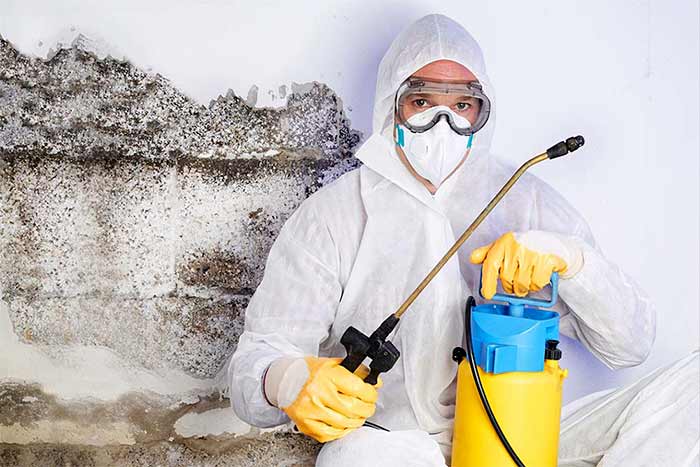
You’ll need to understand the different levels of mold remediation if you want to hire a professional remediation company. This will help you estimate how much you need to pay for their services, how to prepare for the remediation, and the extent of repairs or fixes required to prevent future mold buildup.
Mold remediation levels are usually determined by the extent of mold formation, where it is located and the type of mold (toxic or non-toxic). This means you can also use this information to decide whether you can do DIY remediation, especially for the lower levels, after an inspection report or whether you need to seek professional help.
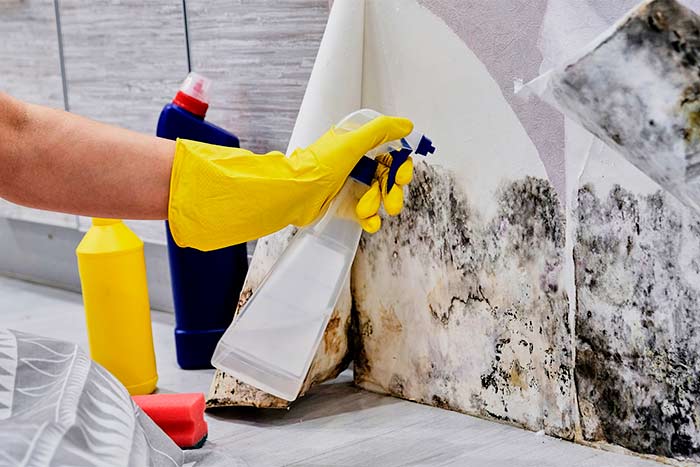
Level 1 Mold Remediation
In this level, you have mold formation on less than ten square feet of surfaces or spaces and in an open area. For instance, the mold could have formed on a section of your kitchen, ceiling, or a small part of your visible drywall, especially after construction or renovation.
Level 1 remediation involves manually cleaning off the mold from whichever space it has formed and also repairing any cracks or structural weaknesses that may have led to the mold formation. It can be done with normal cleaning agents although it is advisable to get purpose-made disinfectants, mold control acids, and mold fogger for crawlspaces and attics.
Level 1 mold remediation can be done as a DIY project although care should be done to ensure that the cleaner does not inhale or ingest toxic mold. Ideally, you should seek a second opinion from a professional inspector before you attempt to clean any mold.
How Would You Tell If You Need Level 1 Mold Remediation?
- The mold formation is less than 10 square feet in surface area.
- If the mold has formed on open surfaces and there is no evidence of further spread
- If it’s non-toxic common house mold such as Cladosporium- It is, however, difficult to tell the difference between toxic and non-toxic mold unless you understand mold or have a chemical inspection done.
- If the mold is not airborne – Mature mold spores often break off easily and float around in the air thus getting into your respiratory system. It is difficult to tell when you are breathing in air contaminated with possibly dangerous black mold unless you have an air sampling done as part of the mold inspection.
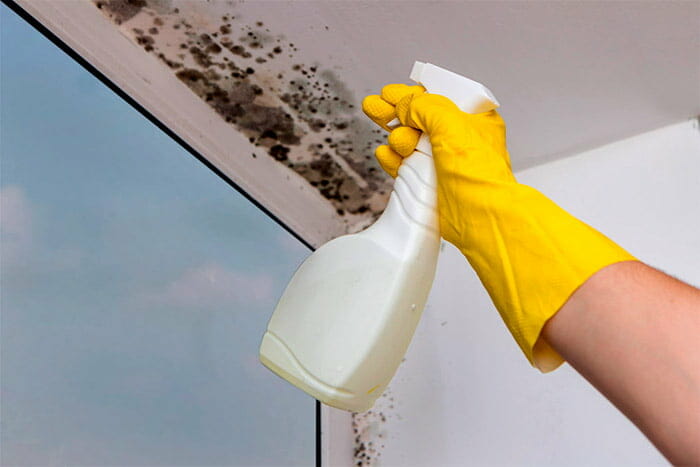
Level 2 Mold Remediation
This level of remediation is needed when there is substantial mold formation- that is above 10 to 30 square feet in surface area and is also hard to identify without a chemical test. For example, you can have unidentifiable black mold covering an entire section of the wall or ceiling and possibly a bit more hidden behind cracks and damp crevices.
How Would You Tell If You Need Level 2 Mold Remediation?
- You find or can observe substantial mold formation- above 10 square feet in size but not exceeding 30 square feet (usually covering an entire wall section or ceiling.
- You cannot immediately identify the type of mold you are dealing with without a chemical test or professional opinion.
- You cannot immediately tell the reason behind the mold problem- for instance, it is not a new house or there are no visible leaks and excess moisture.
You cannot DIY remediate level 2 mold formation unless you have the required personal protective equipment, commercial removal products, and cleaning equipment such as vacuum cleaners. At the same time, getting rid of the mold of this size is usually hard because some of it might be hidden in crawlspaces or invisible. You will need a thermal camera to ascertain that you have eliminated the mold and its source.
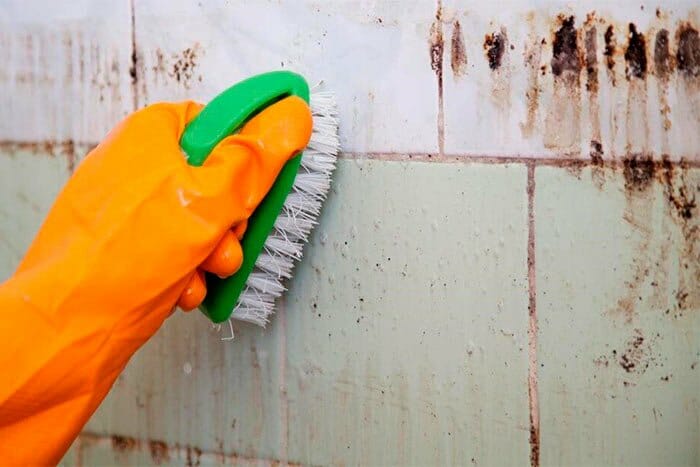
Level 3 Mold Remediation
You need level 3 mold remediation if you have a serious mold problem, especially when you can feel or see airborne spores and probably have mold-related health problems such as breathing difficulty. Level three mold remediation is required if there is at least 100 square feet of mold on various surfaces such as walls, behind drywall, and ceilings. This normally occurs if the building has serious leaks and the mold has been left to grow unperturbed for several weeks.
How Would You Tell If You Need Level 3 Mold Remediation?
- There is at least 100 square feet of visible mold on walls and other surfaces.
- The mold has been forming for several weeks.
- You or your loved ones are having health problems that can be linked to mold poisoning.
- There are visible mold spores floating in the air- some people will have allergic reactions and can smell floating mold that may sometimes cause unexplained sneezing or coughing.
- A mold inspection report indicates that you have level 3 mold formation that needs immediate remediation.
It is not advisable to do DIY level 3 mold remediation unless you have been advised by a certified mold inspector that the mold you are dealing with is non-toxic. Doing so would most likely put you and your loved ones at risk of contamination.
You may also not have the right personal protective equipment such as N95 masks, full-body protective clothing, and gloves. While it might appear easy to scrape the mold off with normal detergents, you will not be able to remediate floating spores that have probably entered the duct system and air-conditioning units.
Level 3 mold remediation should strictly be left to licensed and qualified mold remediators. If possible, occupants should move out and return once the house has been given a clean bill of health through a post-remediation inspection.
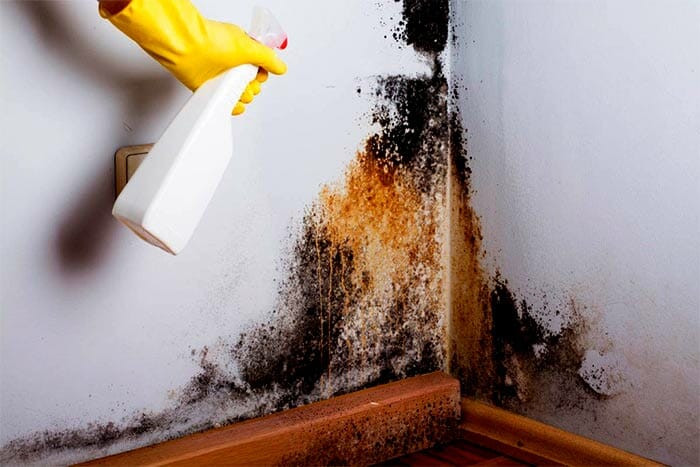
Level 4 Mold Remediation
Level 4 mold remediation is required if there is more than 100 square feet of visible mold and when the mold has been chemically tested and proven to be toxic (Stachybotrys chartarum or Aspergillus Niger). This kind of mold formation can be extremely dangerous to both humans and pets and should be removed as soon as it is discovered.
How Would You Tell If You Need Level 4 Mold Remediation?
- There is more than 100 square feet of visible mold on various surfaces including furniture, curtains, and inside crawlspaces.
- An inspection report has proven that there is a substantial toxic black mold presence.
- You or other occupants have experienced mold-related health problems such as sneezing, breathing problems, lung infection. Prolonged black mold inhalation can cause serious health problems and even death for those suffering from asthma or who have a weak immune system.
DIY level 4 mold remediation is not recommended in all circumstances even if the occupants have access to the required PPEs and cleaning/removal agents. Call a licensed mold remediation company and have them do the work and ensure that the remediation is completed. Level 4 mold remediation requires adequate preparation which includes isolating entire rooms or floors and using commercial mold removal chemicals.
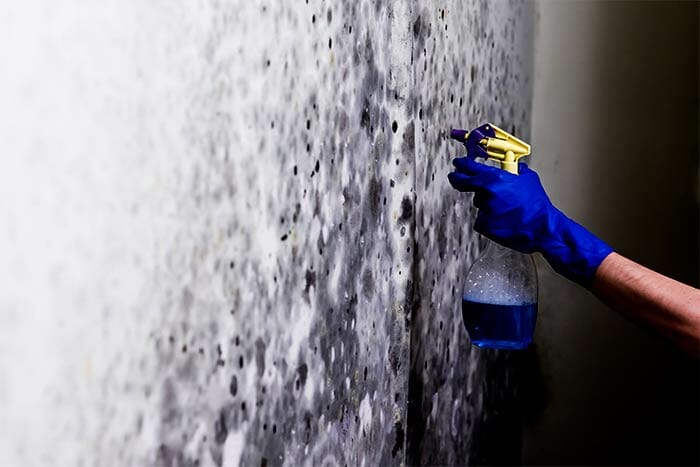
Level 5 Mold Remediation
Level 5 mold remediation is more or less the same as level 4 mold remediation but with substantial amounts of mold found floating in the air and mold in ducts, crawlspaces, behind walls, and other difficult-to-access areas. A multi-step mold inspection that includes air sampling, chemical testing, visual inspection, thermal imaging, and other methods must have been done before requesting level 5 mold remediation.
As you probably guessed, level 5 mold remediation can only be done by a professional team and occupants will have to move out for at least a week. This will allow the cleanup team to isolate the affected rooms or entire house– much like you would do with pest removal- and do the remediation and post-inspection. At the same time, sources of mold must be identified and fixed to prevent future mold formation.
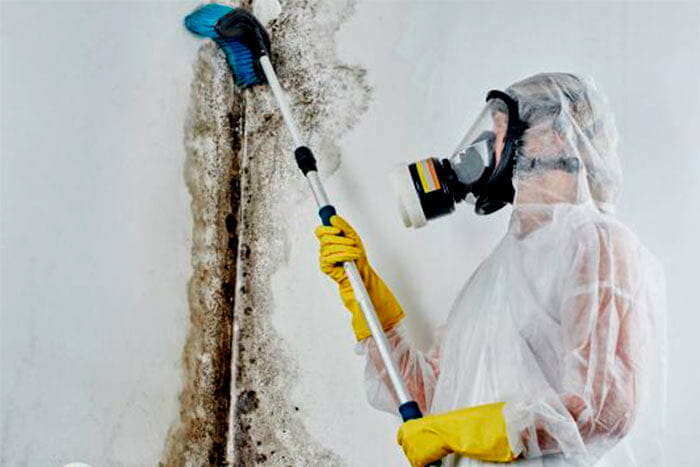
FAQ's
Should I Have My Home Tested for Mold?
You should have your house tested for mold as a precautionary measure after every season- mostly during or after cold seasons. If you suspect that you have mold in hidden places such as inside ceilings and behind drywall, then you should request a mold inspection as soon as possible.
What Companies Do Mold Remediation?
Licensed mold removal companies do mold remediation. There are probably a few of them in your location so it may be a matter of choosing the right one that will solve your problem. Ensure that the company you choose is licensed and has certified mold professionals.
How Long Does Mold Remediation Take?
It normally takes between 2 days to a week to do mold remediation and declare a house safe for re-occupation. Level 1 mold remediation can take a day or two, level 2 remediation takes between 2 to three days, level 3 takes between three to four days while level 5 would take a full week. However, these timelines could be different for your house depending on the type of mold and independent mold remediation methods used by the remediation company you choose.






